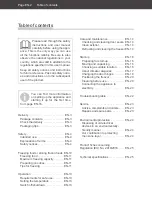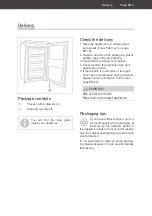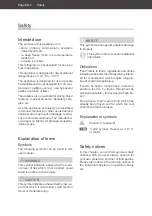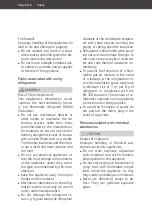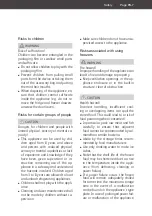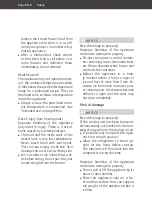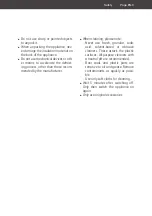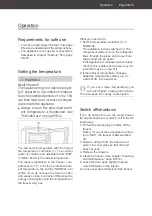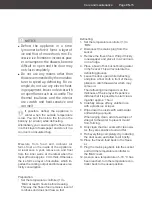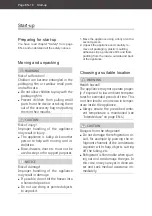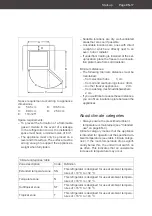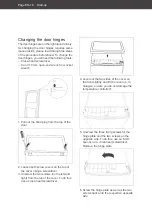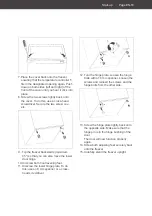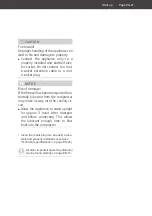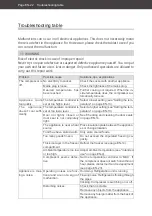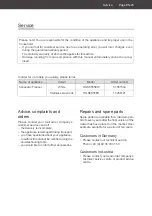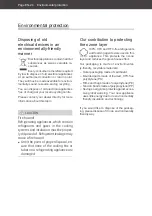
Care and maintenance
Page EN-15
NOTICE
■
Defrost the appliance in a time-
ly manner before it forms a layer of
ice and frost of more than 4 mm. Ex-
cessive ice formation increases pow-
er consumption, the drawers become
diffi cult to open and the door may
not close completely.
■
Do not use any means other than
those recommended by the manufac-
turer to speed up defrosting. For ex-
ample, do not use any electric heat-
ing equipment, knives or devices with
an open fl ame such as a candle. The
thermal insulation and the interior
are scratch and heat-sensitive and
can melt.
If possible, defrost the appliance in
winter when the outside temperature
is low. You can then store the food on the
balcony (or similar) while defrosting.
Alternatively, you can wrap up the frozen food
in a thick layer of newspaper and store it in a
cool room or insulated bag.
Moisture from food and ambient air
forms frost on the inside of the appliance.
At least once a year, remove ice and frost
from the inner walls, at the latest when the
layer of frost is approx. 4 mm thick. Otherwise
the ice forms a layer of insulation, which im-
pedes the cooling output and increases elec-
tricity consumption.
Preparation:
• Set the temperature controller (1) to
‘MAX’ at least 3 hours before cleaning.
This way, the frozen food retains a level of
coldness and does not thaw so fast.
Defrosting:
1. Set the temperature controller (1) to
‘MIN’.
2. Disconnect the mains plug from the
socket.
3. Remove the frozen food. Wrap it thickly
in newspaper and place it in a cool room
or in a fridge.
4. Place a bowl of hot but not boiling water
in the freezer. This will accelerate the
defrosting process.
5. Leave the door open while defrosting
and place a floor cloth in front of the ap-
pliance to catch thaw water which may
come out.
The defrosting time depends on the
thickness of the ice layer. Experience
dictates that it is possible to start clean-
ing after approx. 1 hour.
6. Carefully scrape off any stubborn ice
with a plastic ice scraper.
7. Wipe down the inside with warm water
and washing-up liquid.
When wiping clean, add a few drops of
vinegar to the water to prevent mould
from forming.
8. Only clean the door seals with clean wa-
ter; they are sensitive to oil and fat.
9. Rub everything completely dry, including
the door seals, and allow to air briefly.
10. Place the frozen food back in the freez-
er.
11. Plug the mains plug back into the socket
and turn the temperature controller to
the ‘MAX’ level.
12. As soon as a temperature of –18 °C has
been reached, turn the temperature con-
troller back to the usual position.
Summary of Contents for HGS8555EW
Page 26: ...Technische Daten Seite DE 26 ...
Page 52: ......


